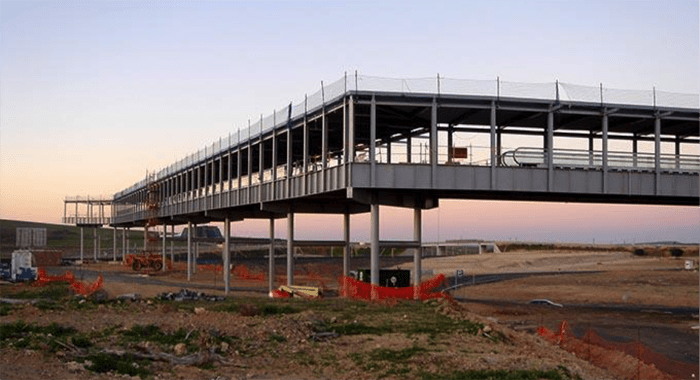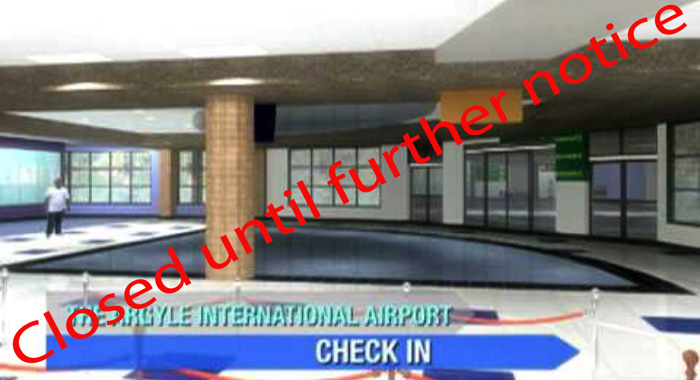The views expressed herein are those of the writer and do not represent the opinions or editorial position of iWitness News. Opinion pieces can be submitted to [email protected].
We have been told by our Prime Minister that Argyle International Airport (AIA) will be completed by Easter 2016 . No dates have yet been given for when AIA will be “operational” — ready to accept non-stop international flights from North American and Europe — let alone when it will be fully “operating” — actually receiving such flights.
Assuming that it will take a year for the airport to move from fully complete to “operational” — after all, regularly scheduled airline flights must be in place so that they can be booked up to a year in advance — means that AIA will receive only the occasional international charter flight before April 2017, at the earliest.
This raises the single most important airport issue, a fact-based reply to Prime Minister Ralph Gonsalves’ question, “Does St. Vincent and the Grenadines really need an international airport?”, grounded in precisely whether and exactly when AIA will start receiving regularly scheduled non-stop flights from far overseas.
My answer is “never” to “exactly when” and “no” to “precisely whether” based on the contents of 21 essays totaling over 30,000 words constituting what appears to be the sole comprehensive cost-benefit analysis of AIA.
For those who think that building an international airport is sufficient to attract hundreds of thousands of well-heeled tourists — or at least guarantees enough overseas visitors to justify its huge construction and loan-servicing costs — I offer the following list of four of the hundreds of abandoned airports in the world and other sites for a list of some of them).
The first one was eventually closed because it became both underused and obsolete, the most common reasons airports are abandoned. (Others are closed or levelled for strategic political reasons or because they were destroyed or badly damaged by natural or human forces.) The other three were quickly shut down because they were never needed.
- Croydon Airport, England

Croydon was an airport in South London whose precursor was built in 1915.
“Croydon was where regular international passenger services began, initially using converted wartime bombers, and the Croydon-Le Bourget route soon became the busiest in the world. Air Traffic Control was first developed here, as was the distress call, “Mayday, Mayday, Mayday”. Amy Johnson took off from Croydon for her record-breaking flight to Australia. Charles Lindbergh arrived in Spirit of St. Louis where he was greeted by an enthusiastic crowd. And Winston Churchill took flying lessons there”.
Said to be one of the three iconic pre-World War II airports in Europe, Croydon’s runway crossed a road on which traffic had to be stopped by a guard waving a red flag, just like our very own E. T. Joshua Airport during its early days.
“Following the end of World War II, it was realised that post-war airliners and cargo aircraft would be larger and air traffic would intensify. Urban spread of south London, and surrounding villages growing into towns, had enclosed Croydon Airport and left it no room for expansion. Heathrow was therefore designated as London’s airport…. The final scheduled flight from Croydon departed on September 30, 1959 …”.
- Castellón–Costa Azahar Airport, Spain

This Spanish airport was officially declared “open” by local authorities in March 2011 at a total cost of EC$440 million despite having neither airlines signed up to land nor government approval to operate. Delayed for several years, commercial flights were supposed to begin on April 1, 2012, but the first commercial plane, a non-scheduled charter flight, landed on September 15, 2015.
In February 2012, it was reported that modifications would need to be made to the runway before the airport could be brought into use. It was later revealed that the runway would have to be entirely replaced.
The airport has become a symbol of the wasteful spending that has sunk Spain deep into a recession and banking crisis. The company managing the airport, Aerocas, was also recently found to have wasted tens of millions sponsoring various regional sports teams. Also, an EC million-dollar 24-metre-tall statue, often interpreted as an image of Carlos Fabra, the formerly powerful local politician who was the power broker behind its construction, was erected just outside the airport. “Fabra has been under judicial investigation in connection with several cases of corruption and tax evasion, and was sentenced to four years in prison for tax fraud in December 2014.”
On Jan. 14, 2014, nearly four years after the official opening of the airport, the first flight departed from Castellón-Costa Azahar. The Air Nostrum charter flight carried the Villarreal CF football team, which is sponsored by the airport company itself, to another Spanish city for a match.
The first regular scheduled (seasonal) flights from Castellón-Costa Azahar to Bristol and London, operated by Ryanair, began in September 2015 but these destinations are no longer listed on the airline’s booking site.
The European Union has opened a formal investigation into whether the troubled Canadian company that manages the dead airport (SNC-Lavalin) and Ryanair received illegal subsidies from the regional government.
Original photo by Manuel Carballo on Flickr
- Ciudad Real Central, Spain
The EC$440 million wasted on Castellón–Costa Azahar Airport is a pittance compared to the EC$3.2 billion flushed down the toilet to build Ciudad Real Central. Conceived in the 1990s and previously known as Don Quijote Airport,
it is an international airport south of Ciudad Real in Spain. Located over 120 miles from the centre of Madrid and next to the A-41 motorway, it was planned to be connected to the Madrid-Seville high-speed rail line. The airport would have been 50 minutes away from either central Madrid or Córdoba, and less than two hours from Seville and Málaga.
It was the first international private airport in Spain but was closed after just three years in operation, its management company having gone into receivership. A BBC News report suggested that the airport was planned to fail by its investors, who benefited from construction contracts awarded to their own companies.
International flights to the airport began in June 2010, but by October that year all international routes were cancelled, followed by the airport’s filed for bankruptcy with more than EC$885 million of debt. The airport is now in receivership. Due to poor planning and over-optimism on the part of large financial investors, major deficiencies in the early planning stages were overlooked.
Only one airline signed up to fly out of the airport and none of the potential airlines that were considered were interested in using it. The annual passenger traffic was measured in the low thousands, compared to the anticipated traffic of up to 10 million. The outlook is bleak after closure. The airport has contributed significantly to the financial trouble of the creditor institutions and the Castilla-La Mancha Regional Government.
The airport ceased operation on April 13, 2012 and was put up for auction Dec. 9, 2013, for a minimum price of EC$295 million. No one offered that amount, so the sale period was extended into the future.
On July 27, 2014 the Commercial Court of Ciudad Real agreed to extend the deadline for the sale of the facility for a seventh time, lowering the asking price to EC$236 million in an attempt to find a buyer.
On 17 July 2015, it was reported that Chinese investment company Tzaneen International entered into an agreement to buy the airport for a paltry EC$30 million. The court rejected the bid as too low.
On Sep. 14, 2015 it was reported that a British group had purchased the airport for at least the new required minimum of EC$80 million, or three per cent of the actual construction costs.

- Ralph E. Gonsalves International Airport [updated December 31, 2019]
Formerly known as Argyle International Airport, the renamed airport opened to much local and regional fanfare at a tearful ground-kissing ceremony in the tiny Eastern Caribbean country with the disproportionately long name of St. Vincent and the Grenadines on Aug. 8, 2017, the birthday of its Prime Minister, the Honourable Dr. Ralph E. Gonsalves, who gave in to considerable arm twisting to allow the airport to be named after him.
Declared “open for business” 12 years after Dr. Gonsalves announced its construction in 2005, the airport was “temporarily” moth-balled exactly two years later on August 8, 2019 by the Prime Minister’s hand-picked successor, American-born Camillo Gonsalves — who replaced his father who stepped down three months earlier as the country’s longest serving Prime Minister — in a bittersweet swearing-in ceremony in his hometown of Colonarie not far from the new airport.
The new Prime Minister listed the unexplained departure of several senior airport executives, the crippling costs of servicing the underused facility, what he called “extortionary” monetary concessions demanded by international air carriers in exchange for serving the new airport, the closure of Buccament Bay Resort two years earlier on the eve of the new airport’s official opening, a sharp decline in Eastern Caribbean tourism numbers due to the lifting of the Cuban embargo, and inconclusive negotiations with several hotel and resort developers, including a group of Canadian investors interested in building a five-star hotel/resort complex, elite-class condominiums and villas, a high-roller casino, and a world-class golf course in the Mt. Wynne/Peter’s Hope area, as necessitating what he hoped would be a short restructuring period.

Despite many promises going back to 2005 that the airport would see a burst in hotel development on the mainland and non-stop international flights by several large airlines such as British Airways, American Airlines, Jet Blue, Delta, Spirit, Air Canada, WestJet, and Caribbean Airlines, only LIAT and a couple of other tiny regional carriers and charter providers transferred their operations from the shuttered E.T. Joshua International Airport at Arnos Vale to the new Ralph Gonsalves Airport at Argyle.
The lack of airline interest, except for occasional charter flights from England, the United States, and Venezuela, has been mentioned by pundits as the main cause leading to the airport’s closure. Because the proposed “new city” at Arnos Vale has also borne no fruit, LIAT and other regional carriers such as SVG Air and Mustique Airlines should be able to resume operation there once the old airport is re-commissioned, a process the Prime Minister promised would take no more than three months. In the meantime, visitors to the mainland will have to travel there by boat.
Several commentators have also speculated that the airport was bound to fail, pointing out that there are already four underused international airports within 100 miles of St. Vincent in Barbados, St. Lucia, Canouan, and Grenada, and that the mainland has little to offer discerning international travellers, which they also cited as a deterrent to hotel and resort development.
A few informed individuals stated that the country simply did not spend enough money improving and promoting its tourist attractions; others retorted that the mainland had few tourist attractions to improve and promote.
If AIA remains closed for much longer, informed analysts are wondering whether the auction sale of an airport that cost EC$940 million of largely borrowed public dollars to build will recoup even the three per cent that Ciudad Real Central is likely to get back.
***
This is the 22nd in a series of essays on the folly of the proposed Argyle International Airport.
My other AIA pieces may be found at:
- Get ready for a November election!
- Lessons for Argyle Airport from Canada’s Montreal–Mirabel Int’l
- Lessons for Argyle Int’l Airport from the cruise industry
- Lessons from Target Canada for Argyle Int’l Airport
- Lessons from Trinidad & Tobago for Argyle Int’l Airport
- The Dark Side of Tourism: Lessons for Argyle Airport
- Why Argyle Won’t Fly: Lessons from Dominica
- Ken Boyea and the Phantom City at Arnos Vale
- Airport Envy Vincy-Style
- Fully realising our country’s tourism potential
- Airport without a cause
- The unnatural place for an international airport
- The Potemkin Folly at Argyle
- False patriotism and deceitful promises at Argyle
- Airport politics and betrayal Vincy-Style
- Phony airport completion election promises, Vincy-style
- Is Argyle Airport really a ‘huge game-changer for us?’
- Has the cat got your tongue, Prime Minister?
- More proof that Argyle won’t fly
- Our very own Vincentian cargo cult at Argyle
- The missing Argyle Airport feasibility studies
C. ben-David
The opinions presented in this content belong to the author and may not necessarily reflect the perspectives or editorial stance of iWitness News. Opinion pieces can be submitted to [email protected].






lol! I almost never deny myself a good read and a good laugh —even at my own expense, if it comes to that.
To date and as money laundering operations go, Spain’s Castellon is my favourite and for a sort of personal reason.
However, despite this writer’s futuristic musings, I fervently hope that Argyle International never gets to either upstage nor outdo any of the crooked, graft-ridden construction projects that C. Ben-David has covered in this piece.
When I wrote a similar article it went viral and was used on numerous radio news channels world-wide. The article when appearing on Caribbean News now recorded about 7,000 hits. It appeared in Russia, Africa and Taiwan.
http://www.caribbeannewsnow.com/headline-Letter%3A-Is-the-government-creating-a-ghost-airport-in-St-Vincent-21119.html
http://www.caribbean360.com/opinion/opinion-is-st-vincent-creating-a-ghost-airport
http://www.mnialive.com/articles/is-st-vincent-creating-a-ghost-airport
Not surprised at all at the global interest. Most conscious stakeholders are sensitive to this sort of thing. Outcomes like these strike at the very heart of national integrity and economic progress in any country. Almost invariably, it also strikes at the pockets of those least able to endure it. However, for SVG, such a set of circumstances might yield only passive tolerance and increased supplication to the almighty for mercies, both tender and financial. SVG is truly special.